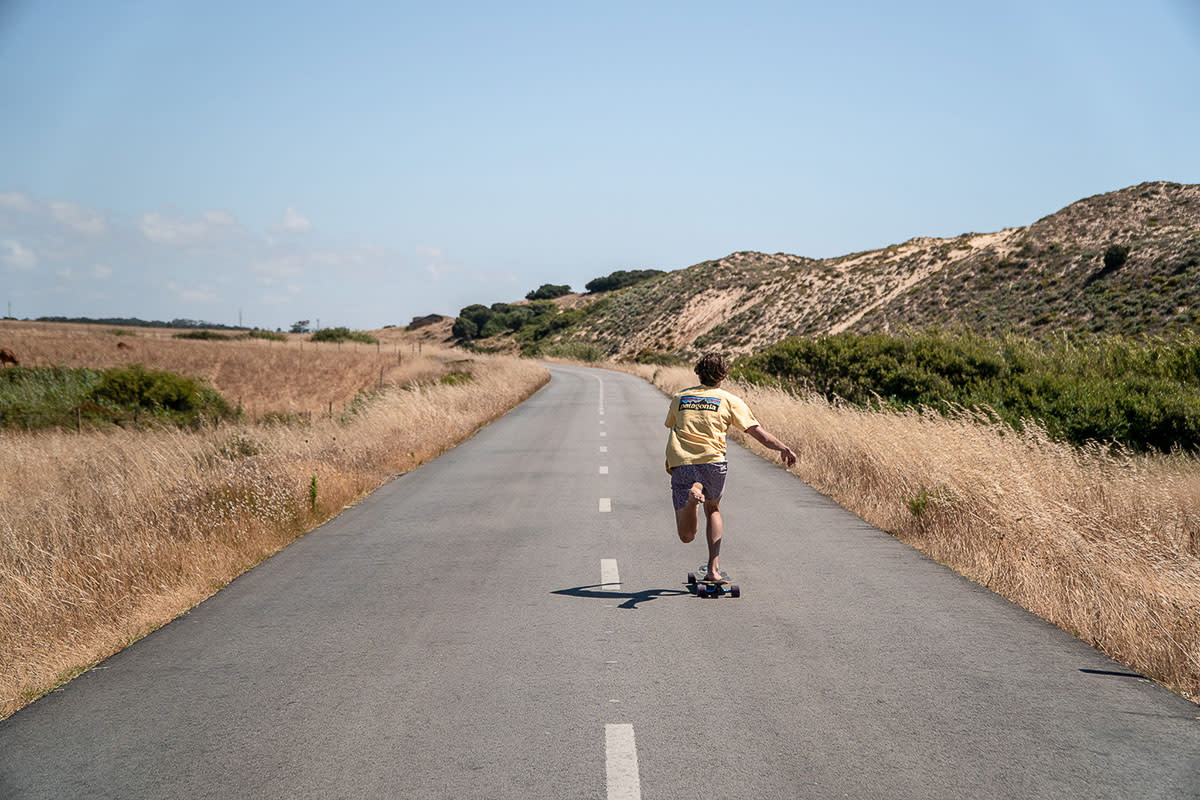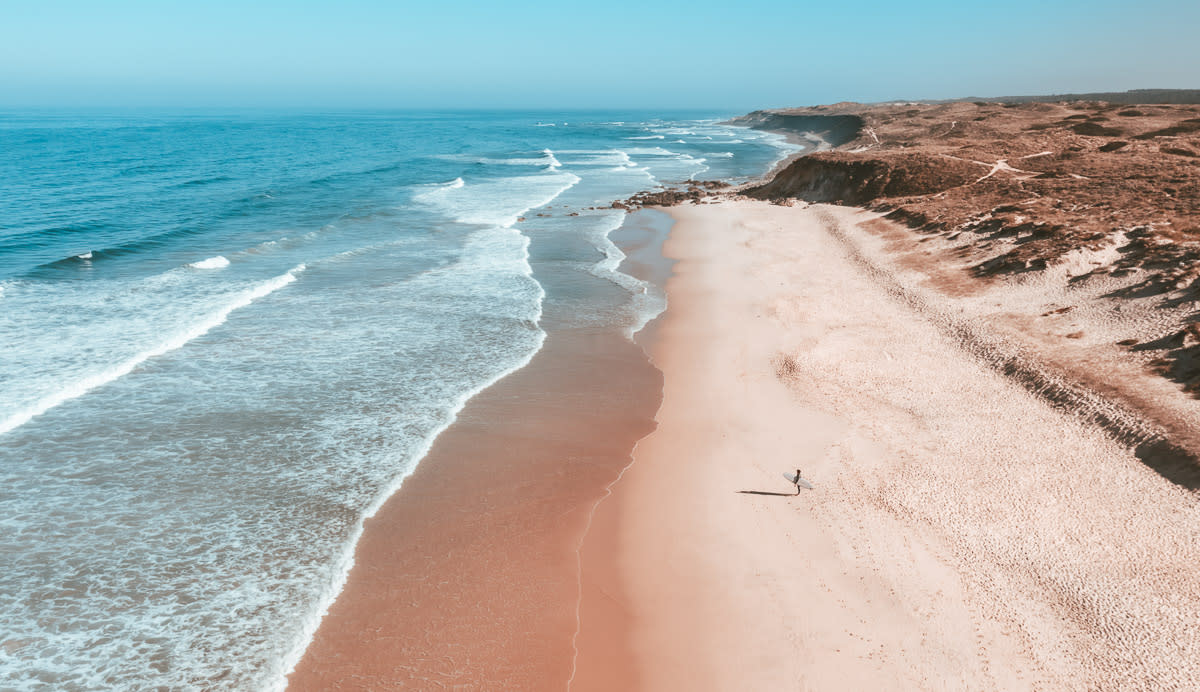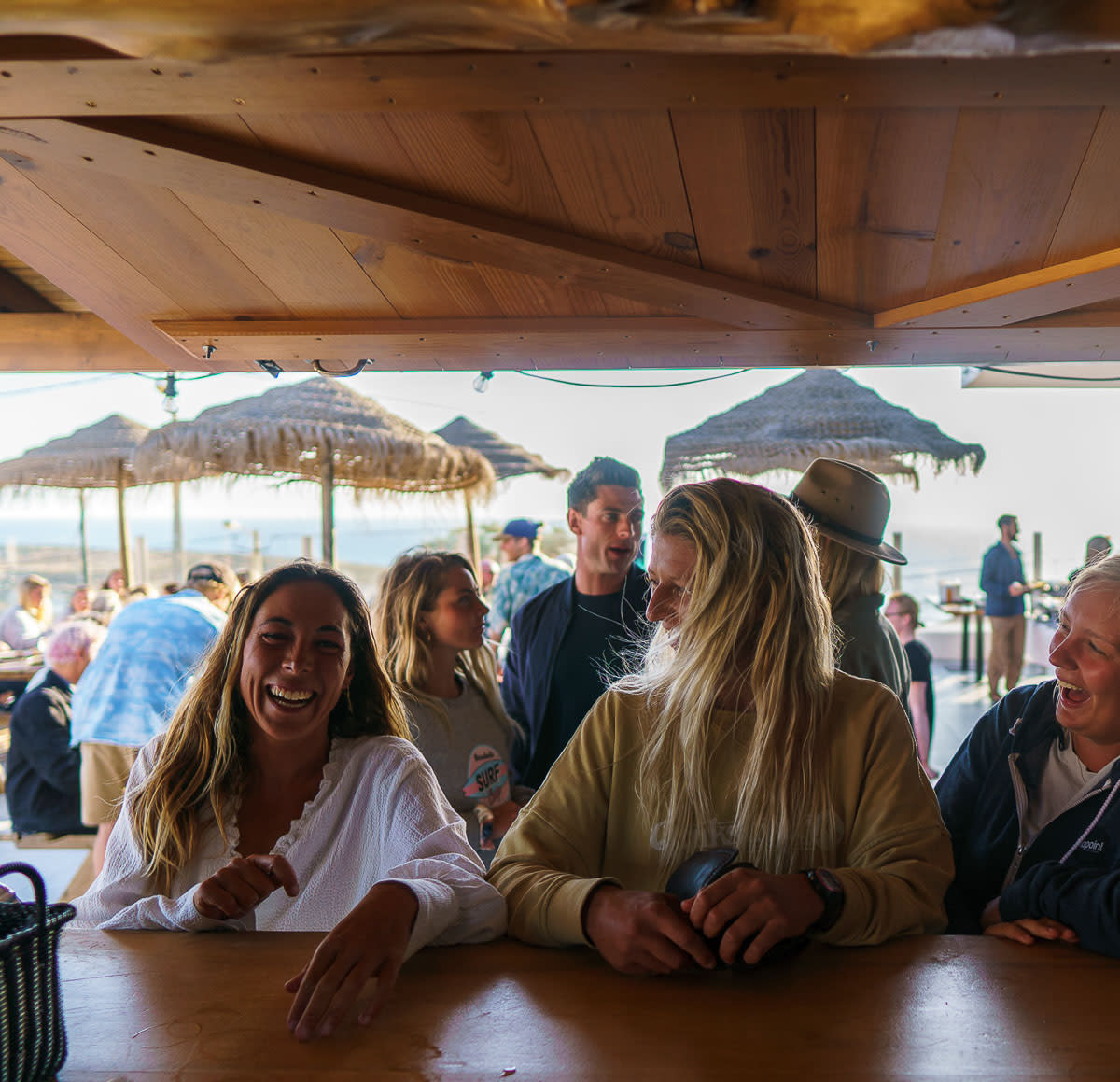
The Ultimate Guide to Travelling to Portugal
February 18, 2025Are you planning a trip to Portugal? If you have yet to experience Portugal’s colourful beauty and vibrant culture, now is the perfect time to start planning your trip.
Portugal is known for its glimmering-blue beaches, top-notch surf spots, and rich culture, not to mention the fantastic food and wine. Its rugged coasts, artful architecture, and affordable prices make it a highly attractive vacation spot for millions of tourists from all over the globe year-round.
If you’re a complete newbie to Portugal, keep reading because this article is going to help you plan your next trip down to the detail. This Portugal travel guide will show you the best places to visit in Portugal, give weather tips, ideas on what to do, and basically everything you need to know about travelling to Portugal.
TIPS & TRICKS
Portugal Travel Guide
What to Expect on Your Trip to Portugal
Currency: Euro € (Current rate: 1€ = $1.22 USD)
Population: 10.28 million
Official Language: Portuguese
Main Foreign Spoken Languages: English, French, Spanish
Typical Food Types in Portugal: Seafood, meats, and vegetables. Since Portugal is on the Atlantic Coast, seafood is a favourite for the Portuguese, and you will find a plethora of seafood options in most restaurants in Portugal. Other traditional Portuguese meals include different sorts of meats and many vegetable sides.
There is a growing offer of tasty vegetarian and vegan options as well.
Safety: Portugal is incredibly safe and has one of the lowest crime rates in Europe (making it an excellent choice for solo travellers). Like all places, though, you should still look out for pickpocketing. Just be cautious and you shouldn’t have any problems.
Plugs: The plugs in Portugal are the standard two-prong European plugs (like the ones you’d see in France, Germany, or Italy, for example). In technical terms, they are called type F with 230 standard voltage and 50 Hz standard frequency. Be sure to bring adaptors and converters for any of your electronics and chargers.
Payment Types: You will be able to pay with a card at most restaurants, stores, and hotels, especially in bigger touristy cities. Visa and Mastercard are generally the best cards to bring with you, though, because not all places are known to accept American Express, Amex, or Discover.
In smaller cities and some smaller shops, you will only have the option to pay in cash. Having cash is also a good idea in general if you want to buy street food or small souvenirs from markets.
You can take cash out at any ATMs in Portugal known as Multibanco. Look in shopping centres, banks, airports, and train stations, and you’ll be sure to find an ATM close by.
Pro tip: ATMs usually charge a fee for currency conversions. To save money on fees, the best thing to do is press “no” when the ATM asks if you’d like to convert to your home country’s currency. By saying no, your bank will charge you a conversion fee (if your card doesn’t have free international transactions), but this charge will be less than the ATMs fees.
Best Ways to Get Around Portugal
For the bigger cities in Portugal, such as Lisbon or Porto, you can rely entirely on public transportation without renting a car.
However, smaller Portuguese towns do not have many options, if any, when it comes to trains or buses. If you plan on taking day trips to less popular or remote towns, you will likely need to rent a car.
Bigger cities like Lisbon and Porto offer transportation cards that you can purchase and have daily access to all trains, buses, and trams, which is an excellent option if you plan on using a lot of public transport each day.
DRIVING
Cost of renting cars in Portugal
The costs to rent vehicles in Portugal varies by season and, naturally, by car type. Portugal is incredibly affordable, though, so the car rental prices are known to be cheap. A general estimate is ~15€ per day for a small car, ~50€ for a van, and upwards of ~90€ per day for a luxurious car.
How to rent cars in Portugal
You do not need an international license to rent a car in Portugal if you plan to rent for less than six months and only drive within Portugal. If you plan to drive into Spain, you should probably get an international driver’s license before your trip because the laws aren’t the same outside of Portugal. To get a car, you will just need your passport, credit card, and you must be older than 18.
Three top-rated car renting companies you can check out are:
COSTS
Cost of Traveling in Portugal

Portugal is one of Europe’s most affordable destinations, so it’s truly the best place if you are looking for a fantastic vacation with a small price tag. It’s especially cheap if you visit Portugal during the off-seasons, like October-February. During summer/peak seasons, though, you can expect accommodation costs in Portugal to rise by anywhere from 20-40%.
Popular touristy areas will, naturally, cost you more for accommodation. For example, when staying in Portugal’s capital, Lisbon, an average nice, non-luxurious hotel costs anywhere from €150-300 per night, €75-130 for budget hotels, and €25-50 for hostels.
If you were to stay in a less famous (yet still amazing!) city, for example, Tomar, costs will be a lot cheaper. You can enjoy an excellent 3–5-star hotel in a small town like this for less than €100 per night.
Cost of Taxis & Uber in Portugal
The cost of taxis in Portugal varies, but overall, they are expensive compared to the cost of public transportation. The average cost for a cab or Uber in Portugal is around 1-1.5€ per kilometre, depending on the day of the week and the time of the day.
To prepare you can download the top two Uber alternatives in Portugal: Bolt & Free Now.
Cost of Food in Portugal
You can get some amazing food in Portugal at surprisingly low prices. For lunch at a sit-down restaurant, the average cost is 12€ per meal. Street food and fast food is even cheaper and can cost around half of that.
Nice evening meals can cost you a bit more if you’re in a trendy spot, but on average, a plate will cost anywhere from €15-30.
When to Visit and Weather Seasons in Portugal
Portugal is one of Europe’s sunniest countries, so the weather here is decently moderate and beautiful all year round. The heat and rain levels can vary, though, depending on the city and the time of year. So, if you’re trying to decide when to go to Portugal, you first need to think about your trip plans.
Springtime in Portugal
Springtime in Portugal is a favourite for many travellers because of the beautiful spring blooms and comfortable weather. If you are wanting to go sightseeing, hiking, or do other fun outdoor activities, April to May is a great time to travel here. These months are cooler than the summer heat, and it’s usually dry as well, so you won’t have to worry much about rain (especially in the southern cities).
Temperatures in April and May vary by city, but in general, the temperatures in the spring months usually run anywhere between 13-25 degrees Celsius / 55-77 degrees Fahrenheit.
Summertime in Portugal
If your vacation plans mainly consist of beach days and cocktails, we recommend that you visit Portugal in the summertime. During Portugal’s summer months, you can count on hot sunny days pretty much everywhere you go. Central Portugal gets the hottest during the summer and can reach temperatures above 40 degrees Celsius/104 degrees Fahrenheit.
However, even the coastal cities, like Porto and Lisbon, do not usually exceed temperatures of 40 degrees Celsius.
June-August is considered to be Portugal’s peak summer season, so this is the time where you’ll notice accommodation prices spiking. Portugal is also extremely full and touristy during these months, so those of you who don’t enjoy large crowds may want to choose a different time for your vacation, or at least go somewhere less crowded, such as Alentejo.
Autumn
Autumn is equally beautiful to other seasons in Portugal, but the weather does tend to be wetter and have more storms. Temperatures in Autumn are amazingly comfortable, though, and usually, reach up to 25 degrees Celsius / 77 Fahrenheit tops.
If you want to soak up the sun at the beach, do some hiking, or do sightseeing without the intense heat, September is a great month to plan your trip. Many of the summer tourists will also be gone, so you won’t have to deal with as many crowds during this time either.
If you enjoy surfing, this is the time of year when the waves are at their best.
Winter
Portugal’s winter months have much less predictable weather, and naturally, temperatures are cooler. It also rains the most during the winter, but it rarely gets cold enough to snow, except on the mountainside that borders Spain.
Nevertheless, Portugal is still sunnier than most of Europe, even in the wintertime, so it’s considered a great year-round destination. Cooler days on the coast can have temperatures as low as 8 degrees Celsius / 46 degrees Fahrenheit, but the sun continues to make appearances to remind you that spring is coming.
The Algarve, Portugal’s most southern region, is a great winter destination because the temperatures don’t get too low, and the storms are minimal.
WHERE TO GO
Best Places to Visit in Portugal
Now that you have an idea of which season you should plan your vacay, next you have to decide on where to stay! There are countless amazing cities to choose from, but here are 10 of the best places to visit in Portugal that you should definitely add to your list.
Visiting Lisbon, Portugal
Lisbon is Portugal’s capital and one of the most visited cities in the country. Not only is the city full of beautiful architecture and interesting historical sights, but there are numerous nearby beaches with gorgeous shimmering blue waters perfect for beach bums or rush-seeking surfers.
The city is also a key spot for remote workers and digital nomads because of the access to reliable WIFI and the many co-working spaces.
Surfers would be interested to know that Lisbon’s excellent weather and year-long waves crown Portugal as the best surf destination in all of Europe. It’s also home to top-tier surf camps and the only World Surf Reserve in Europe, which is found around 40 minutes out of Lisbon in Ericeira.
Things to Do in Lisbon:
Relax at the beach
A few famous beaches include Cascais, Peniche, and Sintra.
Hit the waves!
Surf pros will love Lisbon’s waters. Beginners can also learn how to surf with a course or surf camp. Check out our other post for the best surfing spots in Lisbon.
Go west to explore Belem.
This is a region in Lisbon that has amazing historical sights like Palacio Nacional da Ajuda, Mosteiro dos Jeronimos, and Torre de Belem
Experience the modern side of Lisbon in Parque das Nações
Parque das Nações is a contemporary neighbourhood in Lisbon that has cool activities and places to see, like the Oceanario Aquarium, the gondola lifts, and the interactive science museum Pavilhao do Conhecimento.
You can find more sightseeing ideas in our other post with the top things to do in Lisbon.
PRO TIP: Try to avoid taking taxis in Lisbon, as most taxi drivers will instantly recognize you as a tourist and might try to overprice you. You can always choose Uber or its alternatives, or take public transportation.
CHILL & RELAX
Looking for something a little calmer? Escape the crowds in Alentejo

Alentejo is situated on the south coast of Portugal, a scenic 2-hour drive from Lisbon. This region of the country offers a genuine cultural experience, where you get up close to the authentic Portuguese traditions and way of life. Endless beaches, stunning nature, beautiful wineries and near-empty lineups are here for you to enjoy. Living carefree in the fresh air in and around the ocean will leave you re-energized and full of good memories.
ERICEIRA
Your Portuguese adventure doesn't end here

Meet Ericeira, a small town 40-minute away from Lisbon, originally a fisherman’s village that now happens to be the only World Surf Reserve in Europe, which transformed its cobbled streets and small cottages into a haven for those seeking a thrilling surf & social experience.
In Ericeira, you’ll live 5-minutes from the beach, with world-class waves and beautiful nature at your doorstep. Built on surf dreams and designed for good times, our camp is perfect for those looking for a more socially active trip.
Visiting Porto, Portugal
Porto is another famous city in Portugal that attracts millions of tourists each year. Found on the northwestern coast, Porto has impressive Baroque churches, landmarks, and a gorgeous waterfront view.
The cobblestone streets, colourful tiles (known as azulejos), and picture-perfect terracotta roofs make Porto one of the most photogenic cities in Portugal. If you enjoy long walks, admiring unique architecture and design, you will definitely enjoy Porto.
Things to do in Porto:
Tour famous cathedrals
The Torres dos Clerigos and Se are must-see
Take a scenic walk to Douro Valley
You can walk down River Douro and enjoy a breathtaking view of the valley’s landscape and charming villages at Douro Valley.
Admire the Dom Luis I bridge
This two-tiered metal bridge serves as Porto’s icon and connects the downtown district Riberia with the port region, Vila Nova de Gaia.
Tour Bolsa Palace
Palacio da Bolsa, which translates to Stock Exchange Palace, is a one-of-a-kind neoclassical building that was historically used as Portugal’s centre for stock exchange.
PRO TIP: Purchase a Porto Card if you plan on exploring the city by public transport. These cards basically work as passes that also give your perks, like 50% off some key attractions and free entry for certain museums.
Visiting Lagos, Portugal
Lagos is an absolutely magical city in the Algarve/southern region of Portugal. Here you will find some gorgeous rock formations, grottoes, and sea caves that will blow you away.
Many tourists flock to Lagos each year because of its coastal beauty and lush resorts. There are also some pretty extravagant sights to see here and fantastic sunset views like no other.
Things to do in Lagos:
Check out historic sites, like Igreja de Santo Antonio
Igreja de Santo Antonio, aka St. Anthony’s catholic church, is considered a National Monument, and it was built in 1707. The outside is gorgeous, but the inside proves to be even more lavish and sparkling with gold.
Watch the sunset at Ponta da Piedade
Ponta da Piedade is a lighthouse landmark that is a popular go-to spot to watch the beautiful sunset into the sea.
Experience the grottos by boat
The grottos and caves are so unique in Lagos, so we definitely recommend you take a tour of the grottos and sea caves with a boat tour. You can find fantastic boat tours around Ponta da Piedade.
Try some fun outdoor activities
If you like to hike, you could take gorgeous hikes up the beaches’ surrounding cliffs. The beaches also offer water sports like kayaking and surfing if you want to spend more time outdoors other than just laying out on the beach.
PRO TIP: Eating out can get expensive in Lagos. To save money, you can try to cook meals at your accommodation. Also, the bread at restaurants is not free like you’d expect, so if you don’t want an extra charge, say “no, thank you” when they bring bread to the table.
Visiting Sintra, Portugal
Another beautiful spot worth noting when travelling to Portugal is Sintra. Sintra is just west of Lisbon, but this city has its own unique style and vibe, so it’s truly worth a visit, even if you plan to stay in Lisbon.
Once you get into Sintra, you will be welcomed with a medieval castle, beautiful countryside, and historic palaces. There are also parks full of exotic 19th-century trees and gorgeous beaches complete with photogenic rocky cliffs.
Things to do in Sintra:
See the magnificent Quinta da Regaleira Palace
This dreamy palace looks like it’s straight out of a luxurious fairytale. Once owned by a wealthy Antonio Augusto Carvalho Monteiro, this palace is now an attractive tourist attraction surrounded by beautiful gazebos and sculptures.
Tour the iconic palaces
The palaces in Sintra are like no other and are some of Sintra’s most famous attractions. Be sure to check out Pena Palace, a colourful Disney-like marvel, and the Palace of Sintra, which has a unique Mudejar design.
Spend a day in the sun walking around Sintra’s Old Town
Sintra’s Old Town, found in the city centre, is a fun place to walk around and explore to start off your day in Sintra. Morning is the best time to go here, though, because the small cobblestone streets fill up fast with tourists as it gets later in the day.
Have a beach day
If you want to hit the waves or relax on the sand, you will love Sintra’s beaches. We recommend visiting Praia de Ursa and Praia da Adraga, beautiful and top-rated beaches not far from the city centre.
PRO TIP: Driving in Sintra is a hassle, and parking spaces are known to be scarce, so public transport is probably your best option when travelling within Sintra.
Visiting Nazare, Portugal
Nazare is another fantastic place to visit in Portugal and an extra-exciting place for pro surfers. Located on the coast in the Oeste region, Nazare is famous for its massive waves that can reach heights up to 35 meters/114 feet!
Besides extreme surfing, Nazare is a beautiful sandy beach oasis known as one of Portugal’s best beach resort towns. Even with its popularity, though, the city is often overlooked by resort towns like Algarve. So luckily for you, if you visit Nazare, you will benefit from lower prices and fewer tourists, especially if you don’t go in the peak summer seasons.
Things to do Nazare:
Spend a day at the famous Nazare Beach
Nazare Beach, aka Praia do Norte, is where all the magic happens. Not only is this beach home to the massive waves, but it’s also stunning, and it’s the perfect place to relax in the sun.
Visit Peniche, a nearby fishing town
Peniche is a small port city just a short drive away from Nazare. Here you’ll have a more slow and traditional Portuguese experience. It’s also home to beautiful beaches, and it’s great for surfing and windsurfing.
Take the Nazare Funicular up to O Sitio
The Nazare Funicular is a sort of transportation that will bring you up a cliff to the northern region of Nazare called O Sitio. The scenic trip up only costs around 2€, but you could also take the incredibly steep stairs (if you’re brave enough) to save cash.
Give dried fish a try
Back in the day, Nazare was traditionally a fishermen’s town. Still today, fish are still vastly sold in the city thanks to tourism. One of their specialities you should try, though, is dried fish (literally fish that is dried out by the sun). Sounds interesting, right? But fair be warned, they have a reputation for being extremely hard to chew, so be careful if you have teeth fillings or dentures.
PRO TIP: If you want to get an eye on one of Nazare’s insane waves, try to visit Portugal in the months between October-February.
While this guide to Portugal just shows 5 of Portugal’s top cities, there are many other amazing places you could also visit while travelling to Portugal. If you’re interested in researching more of the best places to visit in Portugal, you could also check out these cities:
Evora
Tavira
Obidos
Coimbra
Elvas
Aveiro
LEARNING PORTUGUESE
Friendly list of 11 Portuguese Words and Phrases to Know When Visiting Portugal

Most people in Portugal speak good English, and French and Spanish are also widely spoken around the country, especially at the most touristy places like Lisbon, Porto and Lagos. However, learning a few words in Portuguese will do you no hard and will get you points with the locals.
A simple obrigado might get you a friendly smile that a thank you would never provide. Here’s a list of 11 useful words and phrases to know when you arrive in Portugal.
Olá: Hi, hello;
Obrigado(a): This means thank you, and it should be obrigado (ending with an “o”) if you’re a male and obrigada (ending with an “a”) if you’re female;
De nada: You’re welcome. No male/female distinction here;
Bom dia: Good morning;
Boa tarde: Good afternoon;
Boa noite: Good evening/night;
Até logo: See you soon;
Prazer em conhecer: Nice to meet you;
Tudo bem?: How are you?;
Fixe! (pronounced “Fish”): Nice, cool;
Por favor: Please.
NEWSLETTER
Stay up to date, sign up for our newsletter

Maren Gimnes
Maren is a copywriter and content creator with a true passion for exploring the beautiful planet we call home. Her love for the ocean and salty days brought her to Lapoint, where she’s been living the digital nomad life and visiting our surf camps in all corners of the world. Maren aims to inspire others to pursue the surf lifestyle, to never miss a sunset and to follow their dreams.

